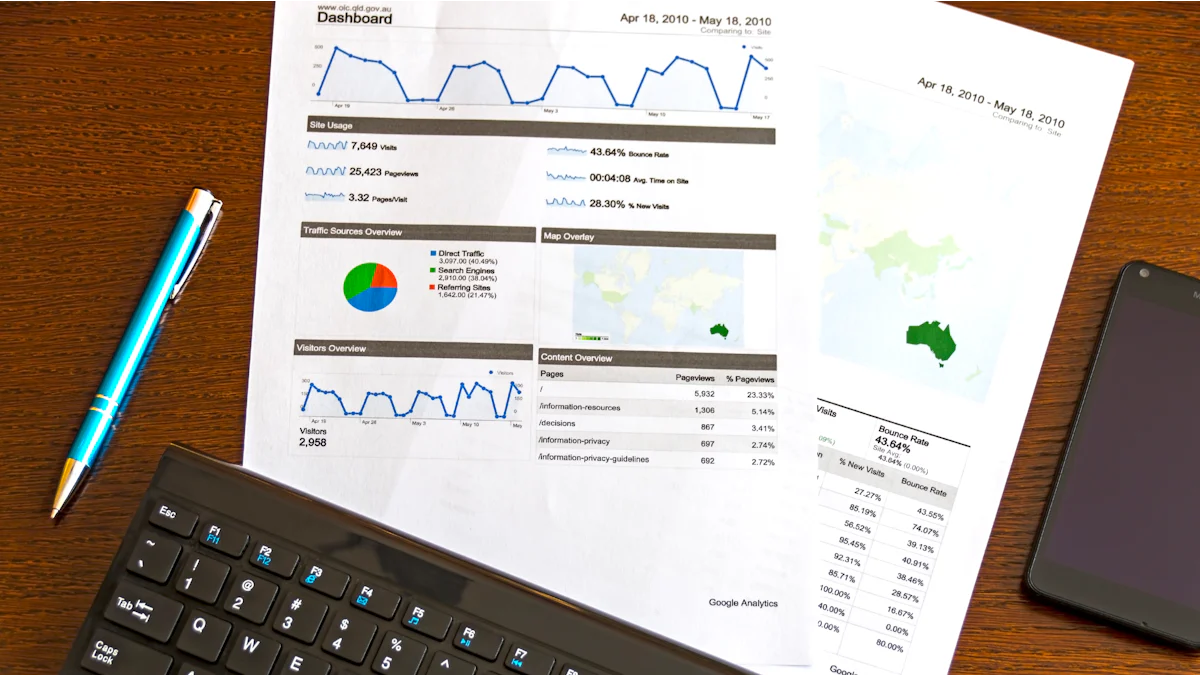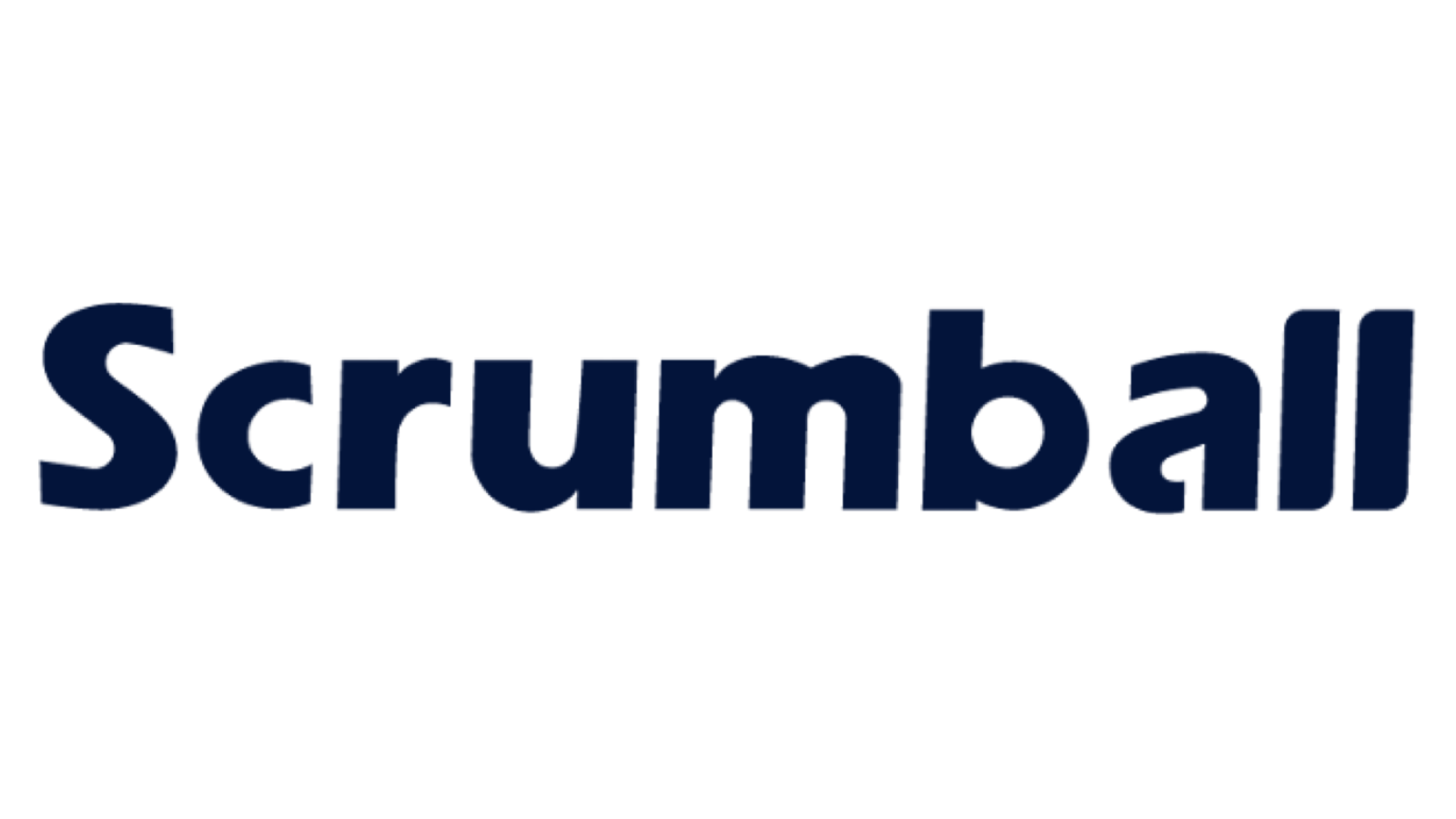Essential Tips for Effective Marketing Automation

Marketing automation offers transformative benefits of marketing automation for businesses. It streamlines processes, enhances lead quality, and boosts engagement through personalized customer journeys. Studies show that 76% of companies use marketing automation, with 91% achieving their objectives. However, challenges like poor data quality and uninspired content often hinder success. Outdated data can lead to higher bounce rates, while ineffective implementation wastes resources. Aligning automation efforts with business goals ensures better ROI. Streamlined processes save time, while personalized strategies improve conversions. By focusing on these aspects, you can unlock the full potential of the benefits of marketing automation for your business.
Overcoming Challenges in Marketing Automation
Addressing Poor Data Quality
Poor data quality can derail your marketing automation efforts. Outdated data, such as old email addresses or phone numbers, misdirects campaigns and wastes resources. Duplicate entries inflate customer counts and distort analysis. Incomplete data makes customer segmentation and targeting ineffective. Inaccurate information leads to flawed strategies. These issues often arise from MarTech silos, manual data entry errors, and the natural decay of data over time.
To tackle these challenges, start by cleaning and organizing your data. Remove duplicates and update outdated information regularly. Implement data entry standards to minimize errors. Use tools that integrate seamlessly with your marketing automation platform to reduce silos. By maintaining high-quality data, you ensure your campaigns reach the right audience and achieve better results.
Ensuring Team Adoption
Your team’s adoption of marketing automation tools determines the success of your strategy. Resistance often stems from a lack of understanding or fear of complexity. To overcome this, involve your team early in the process. Collaborate across departments to ensure everyone understands the benefits and feels prepared to use the tools.
Start small by automating a few key workflows, such as welcome emails for new subscribers. This approach allows your team to see quick wins and build confidence. Provide training sessions and resources to help them master the platform. When your team feels supported, they are more likely to embrace marketing automation and use it effectively.
Simplifying Complexity
Marketing automation can feel overwhelming due to its many features and workflows. Simplify the process by creating visual diagrams of your workflows. These diagrams help you and your team see the bigger picture and stay aligned. Use customer journey maps to identify key touchpoints and opportunities for engagement.
Focus on simplicity and efficiency in your processes. Streamline lead management and integrate your marketing automation platform with your CRM system. This integration aligns your marketing and sales teams, enhances customer engagement, and improves campaign performance. By simplifying complexity, you make marketing automation more manageable and effective.
Aligning Goals and Expectations
Aligning your marketing automation goals with your business objectives ensures that your efforts deliver measurable results. Without this alignment, you risk wasting time and resources on campaigns that fail to support your broader strategy.
Start by identifying your key business objectives. These could include increasing lead generation, improving customer retention, or boosting sales. Once you define these objectives, break them down into specific, measurable goals for your marketing automation efforts. For example, if your objective is to increase lead generation, your goal might be to capture 20% more leads through automated email campaigns within three months.
Tip: Use the SMART framework (Specific, Measurable, Achievable, Relevant, Time-bound) to set clear goals that guide your automation strategy.
Next, ensure that your team understands these goals and how their work contributes to achieving them. Share your objectives during team meetings or through visual dashboards that track progress. This transparency keeps everyone focused and motivated.
You also need to manage expectations. Marketing automation is powerful, but it’s not a magic solution. Results take time, especially when you’re building workflows or refining customer journeys. Communicate realistic timelines and milestones to your stakeholders.
Finally, regularly review your goals and adjust them as needed. Business priorities can shift, and your automation strategy should adapt accordingly. Use analytics tools to measure performance and identify areas for improvement.
Note: Aligning goals and expectations creates a roadmap for success. It ensures that every automated campaign supports your business vision and delivers value.
By following these steps, you’ll create a strong foundation for effective marketing automation that drives meaningful results.
Actionable Tips for Implementing Marketing Automation

Define Clear and Measurable Goals
Setting clear and measurable goals is the foundation of any successful marketing automation strategy. Goals define what you want to achieve, such as increasing lead conversion rates or improving engagement. Objectives, on the other hand, break these goals into actionable steps that can be accomplished in a shorter timeframe. For example, if your goal is to boost email engagement, your objective might be to increase open rates by 15% within two months.
To ensure your goals are effective, align them with your business objectives. This alignment keeps your efforts focused and ensures every campaign contributes to your broader strategy. Use measurable targets to track progress and adjust tactics when necessary. For instance, monitor milestones like the number of leads progressing through the automation cycle or the completion of specific actions, such as downloading a resource or signing up for a webinar.
Tip: Use the SMART framework (Specific, Measurable, Achievable, Relevant, Time-bound) to create actionable goals that guide your marketing automation efforts.
By defining clear goals, you create a roadmap that helps you measure success and identify areas for improvement.
Choose the Right Marketing Automation Platform
Choosing the right marketing automation platform is crucial for achieving your goals. Start by evaluating your budget and comparing pricing plans to find a tool that fits your financial capacity. Look for platforms that offer essential features like email marketing automation and seamless integration with your existing systems, such as your CRM.
Ease of use is another critical factor. A user-friendly interface reduces the learning curve for your team, making it easier to implement automation tools effectively. Reliable customer support is also essential for addressing any challenges during setup or use. Additionally, consider scalability. The platform should grow with your business needs, ensuring long-term value.
Data security and compliance should not be overlooked. Protecting customer data and adhering to relevant laws builds trust and safeguards your reputation. Finally, read user reviews to gain insights into real-world experiences with the platform. These reviews can help you assess the quality of resources and support provided.
Selecting the right platform ensures your marketing automation efforts run smoothly and deliver the desired results.
Clean and Organize Your Data for Success
High-quality data is the backbone of effective marketing automation. Start by cleaning your database to remove incorrect, outdated, or irrelevant information. Eliminate duplicate entries to ensure accurate customer counts and avoid sending multiple emails to the same person. Regularly update your data to keep customer details and engagement metrics current.
Implement validation checks to improve data accuracy during entry. For example, use automated tools to verify email addresses or phone numbers as they are added to your system. Test your data periodically to ensure it remains accurate, complete, and consistent. Monitoring data quality helps you address issues promptly and maintain a reliable database.
Note: Organized data enables better segmentation and personalization, which are key to successful email marketing automation campaigns.
By maintaining clean and organized data, you set the stage for campaigns that resonate with your audience and drive meaningful results.
Map Out Customer Journeys
Mapping out customer journeys helps you understand how customers interact with your brand. This process allows you to identify key touchpoints and create personalized experiences. Start by visualizing the steps a customer takes from awareness to purchase. Include actions like visiting your website, signing up for a newsletter, or engaging with your social media posts.
Use data from your marketing automation platform to analyze customer behavior. Look for patterns that reveal common paths or pain points. For example, if many users abandon their carts, you can set up an automated email to remind them to complete their purchase. These insights help you create workflows that guide customers through the journey seamlessly.
Focus on aligning your customer journeys with your business goals. If your goal is to increase lead generation, design workflows that capture leads at multiple stages. Use tools to segment your audience based on behavior, preferences, or demographics. This segmentation ensures your messages resonate with each group.
Tip: Start with one journey and refine it before expanding to others. This approach helps you create your first automated workflows without feeling overwhelmed.
Start Small and Scale Gradually
Starting small makes marketing automation manageable. Instead of automating every process at once, focus on a single workflow. For instance, automate a welcome email series for new subscribers. This simple step allows you to test the platform and measure results.
Once you see success, expand your efforts. Add workflows for abandoned carts, lead nurturing, or post-purchase follow-ups. Scaling gradually ensures you maintain control and avoid errors. It also gives your team time to adapt to the tools and processes.
Track performance metrics as you scale. Use these insights to refine your workflows and improve outcomes. Gradual scaling builds confidence and ensures your marketing automation strategy grows sustainably.
Develop Engaging Content for Automation
Content is the backbone of marketing automation. Without engaging content, your workflows will fail to capture attention. Start by understanding your audience’s needs and preferences. Use surveys, feedback, or analytics to gather insights.
Create content that speaks directly to your audience. For email campaigns, write subject lines that spark curiosity. Use clear and concise language in your messages. Include a strong call-to-action that encourages the next step, such as downloading a resource or making a purchase.
Repurpose existing content to save time. Turn blog posts into email series or transform webinars into downloadable guides. Personalize your content based on customer data. For example, recommend products based on past purchases or browsing history.
Note: Test your content regularly. A/B testing helps you identify what resonates most with your audience. Use these insights to optimize future campaigns.
Plan a Lead Management Strategy
A strong lead management strategy ensures you convert prospects into loyal customers. Without a clear plan, leads can slip through the cracks, wasting your marketing efforts. By organizing and nurturing leads effectively, you maximize the value of your marketing automation system.
Start by defining what qualifies as a lead for your business. Create a clear profile of your ideal customer. Use data from your marketing automation platform to identify behaviors or characteristics that indicate interest. For example, downloading a resource or signing up for a webinar could signal a potential lead.
Next, segment your leads based on their stage in the customer journey. Some leads may need more education about your product, while others are ready to make a purchase. Use your marketing automation tools to assign leads to the appropriate category. This segmentation allows you to send targeted messages that resonate with each group.
Develop a lead scoring system to prioritize your efforts. Assign points to specific actions, such as opening an email or visiting a pricing page. Leads with higher scores indicate stronger interest. Focus your resources on these high-priority prospects to improve conversion rates.
Finally, create workflows to nurture your leads. Set up automated email sequences that guide them through the sales funnel. Provide valuable content, such as case studies or product demos, to address their needs. Regularly review your strategy and adjust based on performance metrics from your marketing automation platform.
A well-planned lead management strategy ensures no opportunity goes to waste. It aligns your marketing automation efforts with your business goals, driving better results.
Advanced Strategies for Successful Marketing Automation

Leverage Audience Segmentation for Personalization
Audience segmentation allows you to tailor your marketing automation efforts to specific groups. By dividing your audience based on demographics, interests, or behaviors, you can deliver personalized messages that resonate. For instance, if someone enjoys cooking, they are more likely to engage with content about recipes. Narrowing it further, a barbeque enthusiast would respond better to barbeque-specific recipes. This level of personalization leads to higher conversions, better open rates, and increased engagement.
A study revealed that 86% of marketers observed positive results after personalizing campaigns. Businesses using segmentation often see revenue increases of 10% to 20% and conversion rate improvements of up to 50%. These metrics highlight the importance of understanding your audience and crafting messages that align with their preferences.
| Metric | Result | |-------------------------|----------------| | Revenue Increase | 10% to 20% | | Conversion Rate Increase| Up to 50% |
Create Behavior-Based Triggers
Behavior-based triggers help you engage customers at the right moment. These triggers respond to actions like registrations, website visits, or abandoned carts. For example, if a customer leaves items in their cart, an automated email can remind them to complete the purchase. This approach ensures timely and relevant communication.
To implement this strategy, use data insights to identify critical touchpoints. Exit-intent popups can capture attention before a user leaves your site. Win-back emails can re-engage inactive customers. Real-time interactions, such as sending a discount code after a product view, strengthen engagement and drive conversions.
By aligning your messages with user behavior, you enhance the relevance of your campaigns. This strategy not only improves customer experience but also boosts the effectiveness of your marketing automation.
Automate Lead Scoring and Nurturing
Automating lead scoring and nurturing streamlines your sales process. Lead scoring assigns value to prospects based on their interactions, helping you prioritize high-potential leads. For example, a lead who visits your pricing page or downloads a case study may score higher than one who only opens an email. This system ensures your team focuses on the most promising opportunities.
Automation also enables you to nurture leads at scale. You can send personalized emails, share relevant content, and engage prospects at the right time. This approach reduces acquisition costs by targeting qualified leads and increases conversion rates through timely follow-ups.
- Automate lead nurturing to manage large volumes of prospects effectively.
- Use data insights to refine your strategies continuously.
- Rank leads based on their engagement to focus your efforts where they matter most.
By integrating these strategies, you create a seamless process that aligns with your goals for successful marketing automation.
Use A/B Testing to Optimize Campaigns
A/B testing helps you identify what works best in your automated campaigns. This method involves creating two versions of a campaign element, such as an email subject line or call-to-action button, and testing them with different audience segments. By comparing the performance of each version, you can determine which one resonates more with your audience.
Start by selecting one variable to test. For example, you might test the tone of your email subject lines—formal versus casual. Keep all other elements consistent to ensure accurate results. Use your marketing automation platform to divide your audience into two groups and send each group a different version of the campaign. Monitor metrics like open rates, click-through rates, or conversions to evaluate performance.
Once you identify the winning version, apply those insights to future campaigns. Regular A/B testing allows you to refine your strategies and improve the effectiveness of your automated campaigns over time.
Tip: Test one variable at a time to avoid confusion and gather clear insights.
Monitor and Optimize Campaign Performance
Monitoring campaign performance ensures your marketing automation efforts deliver results. Use analytics tools within your platform to track key metrics, such as engagement rates, lead conversions, and ROI. These insights help you understand what’s working and where improvements are needed.
Set benchmarks for your campaigns. For example, aim for a specific open rate or conversion rate. Compare your results against these benchmarks to measure success. If a campaign underperforms, analyze the data to identify potential issues. Low engagement might indicate irrelevant content, while low conversions could signal a weak call-to-action.
Make adjustments based on your findings. Update your workflows, refine your messaging, or segment your audience more effectively. Continuous optimization ensures your automated campaigns stay aligned with your goals and deliver maximum value.
Note: Regularly reviewing performance data helps you stay proactive and adapt to changing audience needs.
Integrate Marketing Automation with Other Tools
Integrating marketing automation with other tools enhances its effectiveness. Connect your platform with your CRM system to streamline lead management and improve collaboration between marketing and sales teams. This integration ensures customer data flows seamlessly, enabling more personalized and targeted campaigns.
You can also link your marketing automation platform with analytics tools, social media platforms, or e-commerce systems. For instance, integrating with social media allows you to track engagement and schedule posts directly from your platform. Connecting with e-commerce tools helps you automate abandoned cart emails or recommend products based on purchase history.
Integration simplifies processes and provides a holistic view of your marketing efforts. It ensures all your tools work together to support your business objectives.
Tip: Choose tools that integrate easily with your marketing automation platform to avoid technical challenges.
Nurture Customer Advocacy Through Automation
Customer advocacy is one of the most powerful tools for growing your business. Loyal customers who promote your brand can influence others to trust and engage with your products or services. Marketing automation helps you nurture these advocates by creating personalized and consistent experiences.
Start by identifying your most loyal customers. Use your marketing automation platform to track engagement metrics, such as repeat purchases or positive feedback. These insights help you pinpoint individuals who are likely to become advocates. Once identified, reward their loyalty with exclusive offers, early access to new products, or personalized thank-you messages.
Encourage customers to share their experiences. Automate requests for reviews or testimonials after a purchase. For example, send an email asking for feedback a week after delivery. Include a direct link to review platforms to make the process simple. Positive reviews not only boost your credibility but also attract new customers.
Create referral programs to incentivize advocacy. Use marketing automation to manage these programs efficiently. For instance, send automated emails with referral links and track the performance of each advocate. Offer rewards, such as discounts or free products, for successful referrals. This approach motivates customers to spread the word about your brand.
Engage with your advocates regularly. Use automated workflows to send personalized updates, such as birthday greetings or product recommendations. Show them that their loyalty matters. Consistent communication strengthens their connection to your brand and increases the likelihood of advocacy.
By leveraging marketing automation, you can turn satisfied customers into enthusiastic advocates. This strategy not only enhances customer relationships but also drives organic growth for your business.
Marketing automation transforms how you approach business growth. It boosts sales productivity by 14.5% and reduces marketing overhead by 12.2%. Nurtured leads not only grow by 451% but also make purchases 47% larger than non-nurtured ones. Automating repetitive tasks like email follow-ups saves time and allows you to focus on strategy. Personalized workflows improve customer engagement and drive better results.
To succeed, define clear goals, choose the right platform, and involve key stakeholders. Platforms like HubSpot or Mailchimp cater to different needs, so evaluate carefully. Start small by automating simple tasks, then scale gradually. Train your team and integrate systems for seamless operations.
Take the first step today. Build a team, identify tasks to automate, and select a platform that aligns with your goals. Marketing automation is your gateway to efficiency and growth.
FAQ
What is marketing automation, and why is it important?
Marketing automation uses software to streamline repetitive marketing tasks like email campaigns, lead nurturing, and customer segmentation. It saves time, improves efficiency, and enhances customer engagement. By automating processes, you can focus on strategy and achieve better results for your business.
How do you choose the best marketing automation platform?
Evaluate your business needs, budget, and goals. Look for platforms with essential features like email automation, CRM integration, and analytics. Ensure the tool is user-friendly and scalable. Read user reviews to understand real-world performance and support quality.
Can small businesses benefit from marketing automation?
Yes, small businesses can benefit greatly. Automation helps you save time, manage leads, and personalize customer interactions. Even with limited resources, you can create professional campaigns and compete with larger companies by using automation effectively.
How do you measure the success of marketing automation campaigns?
Track metrics like open rates, click-through rates, and conversions. Use analytics tools to compare results against your goals. Regularly review performance data to identify areas for improvement and optimize your campaigns for better outcomes.
What are common mistakes to avoid in marketing automation?
Avoid poor data quality, unclear goals, and overcomplicated workflows. Ensure your team understands the tools and processes. Start small, scale gradually, and focus on personalization to avoid overwhelming your audience or wasting resources.
See Also
7 Key Steps for Crafting an Effective Influencer Strategy
7 Crucial Steps for Determining Content Marketing Returns
7 Steps to Create Your Own Influencer Marketing Hub
Strategies for Successfully Integrating UGC in Marketing
Practical Influencer Marketing Data for Better Strategy Decisions
